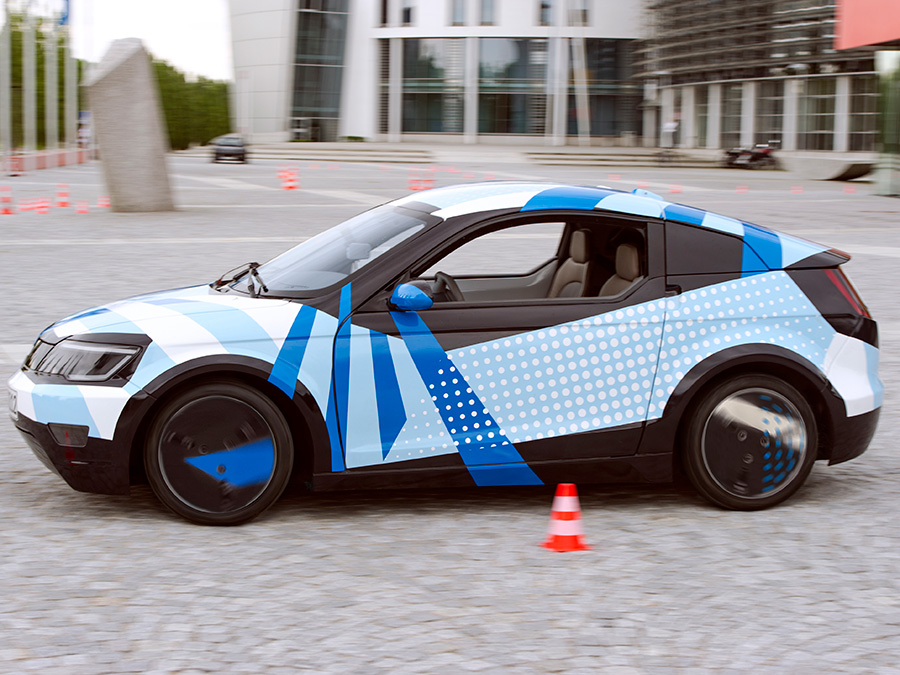Visio.M e-mobility project unveils remote control driving technology:
The invisible driver

Researchers at TUM’s Institute of Automotive Technology have demonstrated that cars can be driven remotely and safely on public roads. As part of their project, the engineers equipped the Visio.M electric car with six video cameras and enabled all functions to be activated via a central control panel. The video images are fed into a computer before being encoded and sent to the driver at the remote operator station via LTE.
The station resembles a driving simulator, equipped with a steering wheel, instrumentation panel and pedals. The operator views the road on three huge monitors that display images from up to five cameras facing to the front and to the sides. The cameras are positioned in the middle of the windscreen behind the rear view mirror. Another camera relays images from behind the car.
The force feedback steering wheel uses actuators to simulate driving forces and thus delivers an extremely realistic driving experience. The brakes are equally realistic – the pedal in the operator station reacts in the exact same way as the pedal in a car. In addition to the 360-degree view of the car’s environment, the operator can also hear exactly what is going on inside the car thanks to Dolby 5.1 technology.
In many cities today, the LTE network has sufficient reach to deliver the bandwidth required to transmit video images, sound and control data from a car. In addition, mobile networks are continuing to expand. These increases in capacity are flanked by the emergence of the next video coding standard, H.265, which can compress images even more efficiently to just fifty percent of the sizes currently possible today. Even without these developments, the data could still be transmitted today via the much slower UMTS network as the delay here is well under half a second.
In the event of a bandwidth bottleneck or a sudden connection failure, the vehicle automatically brakes until it reaches a standstill. Despite the technical feasibility, however, there are still a number of legal hurdles to be overcome before this technology can be deployed on regular roads.
Nevertheless, researchers at TUM firmly believe that remote driving could become a reality in the next five to ten years. And the costs are not prohibitive. The remote control cameras and electronics do not cost more than many optional extras currently available. And there are more than enough situations in which this technology would be of value – ranging from car sharing schemes that deliver the vehicles to the customer’s front door through parking services in city centers or services that remotely drive electric cars to the next charging tower.
About Visio.M:
Participants in the Visio.M consortium are, in addition to the automotive companies BMW AG (lead manager) and Daimler AG, the Technische Universität München as a scientific partner, and Autoliv BV & Co. KG, the Federal Highway Research Institute (BAST), Continental Automotive GmbH, E.ON AG, Finepower GmbH, Hyve AG, IAV GmbH, InnoZ GmbH, Intermap Technologies GmbH, LION Smart GmbH, Neumayer Tekfor Holding GmbH, Siemens AG, Texas Instruments Germany GmbH and TÜV SÜD AG as industrial partners. The project is funded, with 10.8 million euros over two and a half years, within the framework of the program IKT 2020 and the research focus area "Key Technologies for Electromobility – STROM" of the German Federal Ministry of Education and Research (BMBF).
Contact:
Prof. Dr.-Ing. Markus Lienkamp
Institute of Automotive Technology
Technische Universität München
Boltzmannstr. 15, 85747 Garching, Germany
E-Mail - Web